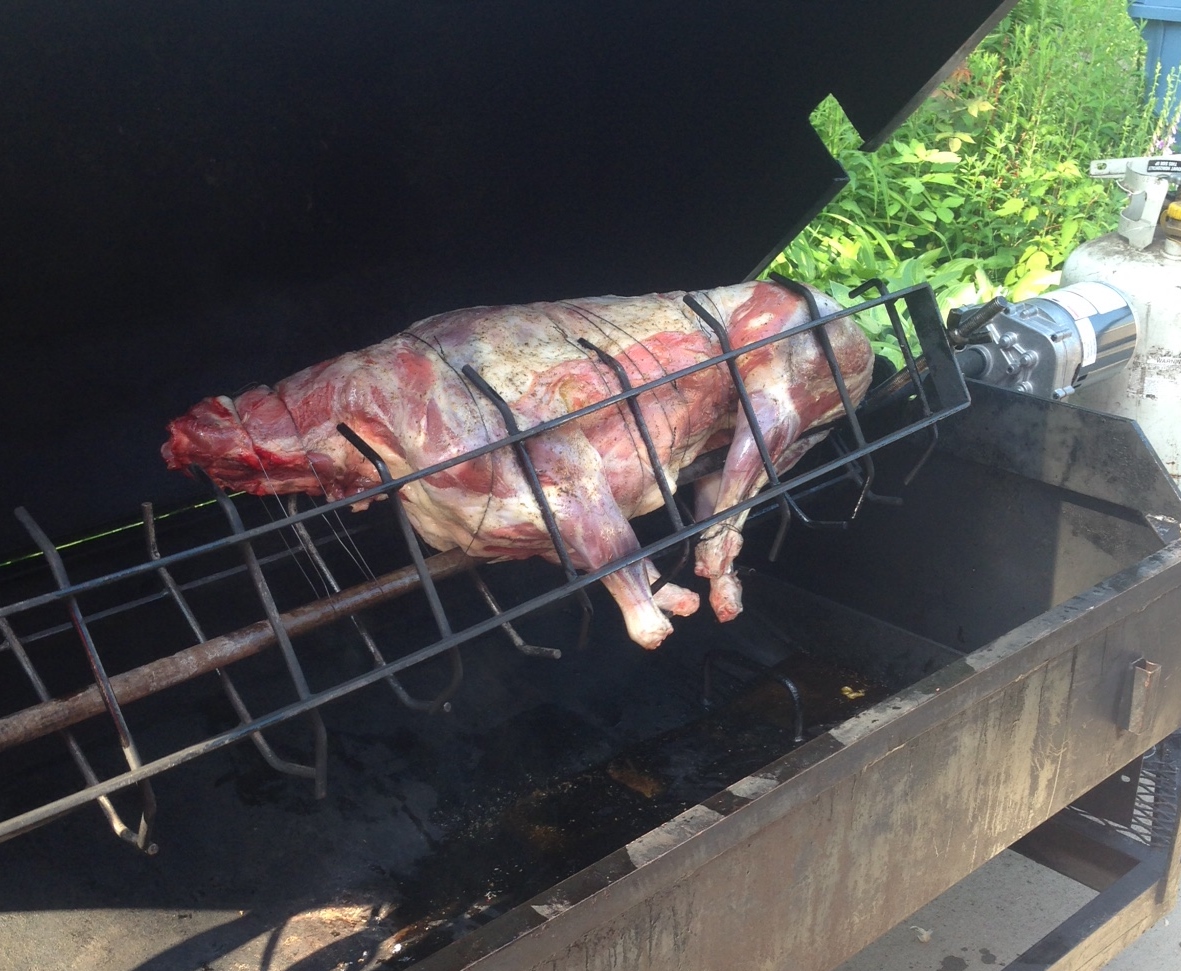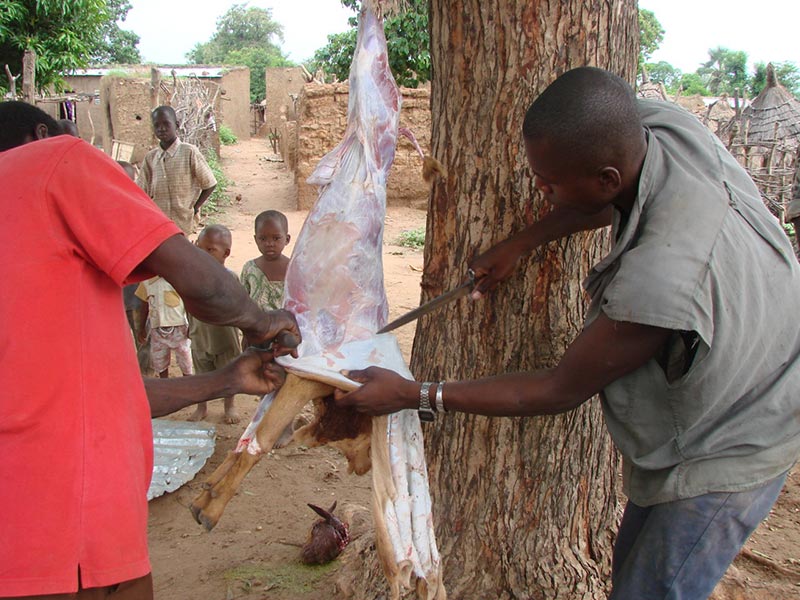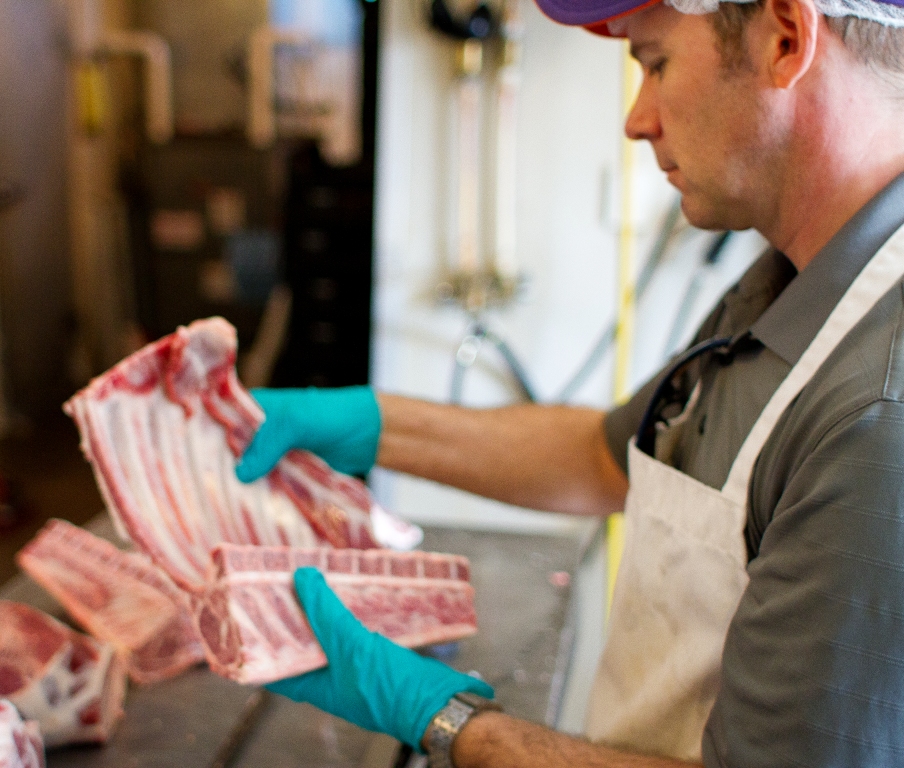Lamb or Mutton? Is There a Difference?
Customer Question: “I have a recipe that calls for mutton but says I can substitute lamb. What is the difference?”
Lamb as a term used in recipes can refer to the meat from sheep at various life stages. Lamb can refer to unweaned (white stomach) lamb, lamb under 1 year of age (standard definition in the U.S.), hogget (yearling) or mutton. And although the meat quality and cooking methods vary, most recipes do not differentiate the age or quality differences. Since recipes originating from a variety of cultures are becoming increasingly popular understanding the type of meat best used for a specific cooking tradition is important.
How to evaluate meat from sheep: Lamb, under 1 year, has slightly wide and moderately flat rib bones and a light red, fine textured meat. Hogget and mutton has wider, flatter rib bones and a darker red, coarse textured meat. Quality lamb meat should have a mild flavor and a fine muscle texture. It should not taste strong nor should the texture be stringy. This guideline can also be applied to goat meat. The taste and often color of the fat differs between sheep and goat carcasses but the texture due to age is generally the same.
The meat chosen to slow cook on a grill or for a traditional stew requires a different product than fast grilled as kabobs or chops. A recipe calling for a lengthy marinade process is best on a yearling or mutton products that will be enhanced by increased tenderness and improved flavor.
Garlic is common in mutton recipes but not needed and distracting when used with lamb meat. A recipe with over 2 cloves of garlic per pound of lamb assumes the meat choice will be mutton not lamb but the recipe may not provide that information. (Note: Connective tissue maturation is common in mutton cuts. The best cooking methods would be to marinate the meat overnight and braise or use other slow, high-moisture cooking methods such as stews. The results are usually superb but using the same method on young lamb is likely to breakdown the already tender meat texture.)
Cultural Differences
Many cultures use a general term for the meat of sheep that translates as lamb or as mutton and there is no differentiation between the age–only size small, medium or big. The size depends upon the need. Larger animals are chosen for events such as religious celebrations or marriage. A new mother may require a smaller option as the meat is only for her and possibly her immediate family. Although lamb is a popular choice, goat meat is often preferred.
In the photograph above, a goat was prepared in honor of Judy’s return to the village. The goat was chosen by size to provide enough for everyone but without leftovers as refrigeration is not available. It will all be eaten during one meal. As this is a resource poor village only rice will be added to the protein. If available a variety of fresh vegetables would also be added. When experimenting with interesting recipes from other cultures it is important to also understand the meat and cooking traditions.
Lambs that weigh 170 pounds!
Lambs have been increasing in size, according to reported USDA records, to 170 pounds and heavier. This is large for traditional breeds of adult sheep and probably not what a customer envisions when choosing lamb from a menu. For a lamb to reach this weight within the 1-year period that distinguishes lamb meat from mutton, it must be on a feeding program high in carbohydrates (grains and processing byproducts) and low in fiber (grass). The meat produced from these large and mature lambs, in contrast to specialty meat purveyors such as Shepherd Song, is likely to have connective tissue maturation and heavier fat layers. Choice cooking options include marinating the meat overnight and braising it or other slow, high-moisture methods as with mutton.
Lamb meat as defined in the U.S. must have break joints on both shanks. When the first 2 adult teeth appear and/or when the shank cartilaginous juncture has ossified giving the typical spool joint they are no longer classified as lamb by U.S. inspection standards. Hogget or yearling and mutton carcasses may have either 2 break joints, 1 break joint and 1 spool joint or 2 spool joints. Mutton carcasses always have spool joints on both shanks. More information and diagrams on carcass evaluation, yield and quality grades for lamb can be found at the Virginia Department of Agriculture and Customer Services website.
White Stomach Lambs
Recipes that refer to “white stomach” lamb (generally 30 day old lambs still on a milk diet) originate from cultures that have a strong sheep dairy history. Sheep cheese is a delicacy in many European countries and a growing industry in the U.S. As with all dairy enterprises, lactation is induced by birth. The resulting lambs traditionally would be raised for approximately 30 days on the ewe then weaned. Thirty days is as early as lambs can be weaned from a milk diet. These small lambs would be sold as soon as possible into the food chain as the disruption in maternal support results in lambs highly susceptible to disease, stunting, and death loss. The profit of the enterprise was in the milk and cheese not in the meat (lambs) produced.
In dairy operations today, lambs, similar to calves and goat kids, are generally weaned at birth or within 3 days so that the dairy can collect the highest volume of milk. The lambs are then raised on milk replacer until their rumens have matured and can efficiently digest other feeds. Without the maternal support of the ewe and flock to teach grazing and safety these lambs will generally not do well except in confinement on a high grain concentrate, easily digested diet.



